Inside The New York Botanical Garden
Flowers
Posted in Science on June 23 2011, by Elizabeth McCarthy
| Elizabeth McCarthy is a post-doctoral researcher in the Genomics Program at NYBG. |
Recently, I had the opportunity to help introduce a group of bright junior high school girls to the science behind the beauty of flowers.
Back in March, I volunteered at the Explore Your Opportunities–The Sky’s the Limit! conference put on by the New York City, Westchester, and Manhattan branches of the American Association of University Women. This conference is open to 7th grade girls from New York City and Westchester schools and is designed to encourage girls to pursue science, technology, engineering, and mathematics (STEM) careers through fun, hands-on activities and by providing them with women role models from these fields. This conference has been run annually in the New York City area since 2004, first at Barnard College and now at the College of Mount St. Vincent, and is based on the Expanding Your Horizons in Science and Mathematics™ (EYH™) conferences, which first started in 1976 and now take place worldwide. During the conference, the girls hear a keynote address and then break up into smaller groups to do two hands-on workshops.
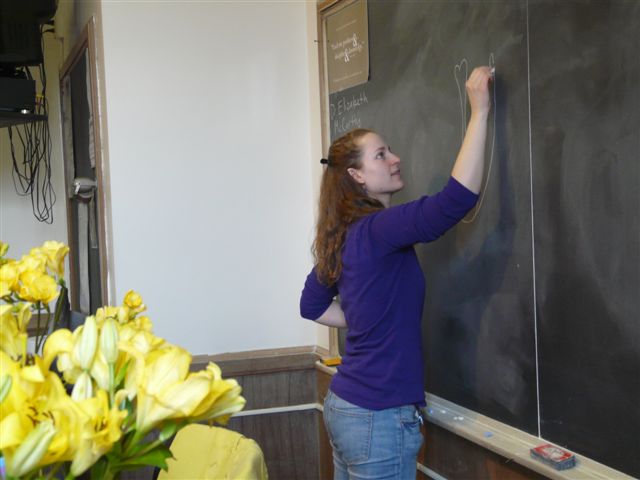
I led a workshop called ‘Flower Hour,’ which explored the science of a flower’s shape. I brought in five different types of flowers for the girls to examine. First, I asked the girls to look carefully at a yellow tulip, to describe what they were seeing in as much detail as possible. I gave them five minutes to write their observations down, and then they took turns sharing them with the group. I was impressed with the responses: One girl knew that the plant from which the flower came was an autotroph, an organism which makes its own food from inorganic compounds, and another observed that the flower had the same number of petals as it did stamens. After each girl shared her observations with the group, I drew a flower on the board and taught them the botanical names for floral parts.
In preparation for our next activity, I put five shapes on the board: an oval, a triangle, a star, a circle, and a square.

I asked the girls how they would group these shapes. Everyone agreed that the circle and oval belonged in one group and the triangle, square, and star belonged in another because circles and ovals have rounded edges and triangles, squares, and stars are pointy. Then I asked them, of the triangle, square, and star, which two were more closely related? There were some differing opinions, but they were all backed up by good reasoning. Some girls thought the triangle and square should go together because a square is made up of two triangles, whereas others thought that the triangle and star were more closely related because a star’s points look like triangles. From these series of groupings, we could create a family tree of these shapes, which shows how the shapes are related to each other.

Next, I gave each pair of girls five different flowers: a yellow lily, a pink lily, a yellow tulip, a red and yellow tulip, and a yellow freesia. I asked them to observe the similarities and differences among the flowers that would allow them to group them in a way that reflects how the flowers are related to each other, like we did with the shapes. I chose these particular flowers for several reasons. The duplicate lily and tulip flowers differed only in color, so were easily grouped as similar based on form and shape. I chose three different types of yellow flower to illustrate that some characteristics are more useful in determining relationships than others. In this case, three flowers share the same color, but have different shapes; therefore, grouping according to shape instead of color gives a more accurate estimation of the relationships among the flowers.
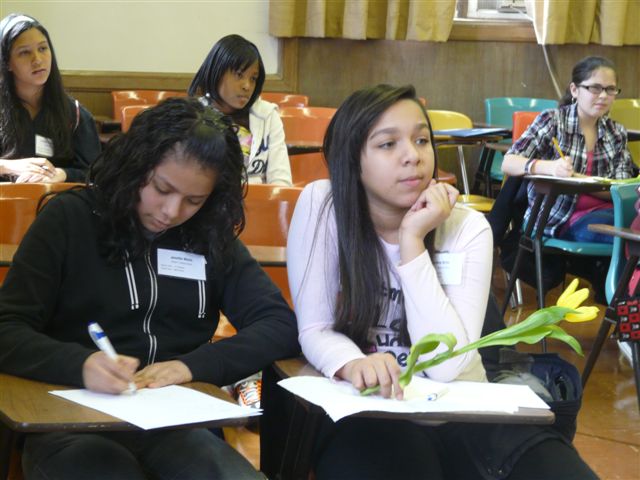
The girls noticed that the lilies and tulips all had six colorful tepals, the term given to the showy, petal-like structures of flowers whose sepals and petals look similar. The freesia, on the other hand, had green sepals and six petals, but the petals were fused to form a tube, which distinguished this flower from the others. The girls also observed that the carpels, the female flower parts, of the lilies and tulips looked similar, whereas that of the freesia was much more delicate and had a different shape. In light of these observations, the girls grouped the tulips and lilies together, while the freesia stood alone as distinct from the rest. Through this exercise, the girls not only learned to closely examine flowers and their specific parts, but also about studying evolution and how shared characteristics can be used to determine the relationships between species. The family tree the girls created was correct. Lilies and tulips are both members of the Liliaceae, the lily family, whereas freesias belong to the Iridaceae, the iris family.
Overall, it was an excellent day. I got to interact with very bright, engaged young women who were inquisitive and eager to learn. They will now look at flowers in a new way, appreciating not only their beauty, but also how scientific observation can be used to estimate the evolutionary relationships between species. I hope that my enthusiasm and love of science and plants promoted their interest in the sciences and encouraged them to view a scientific career–maybe even botany!–as a plausible option for their future. I am already looking forward to next year’s conference!
Posted in Photography on June 20 2011, by Ann Rafalko
No, not a sunflower. Just a little dahlia. She may be little, but she’s got a sunny disposition!
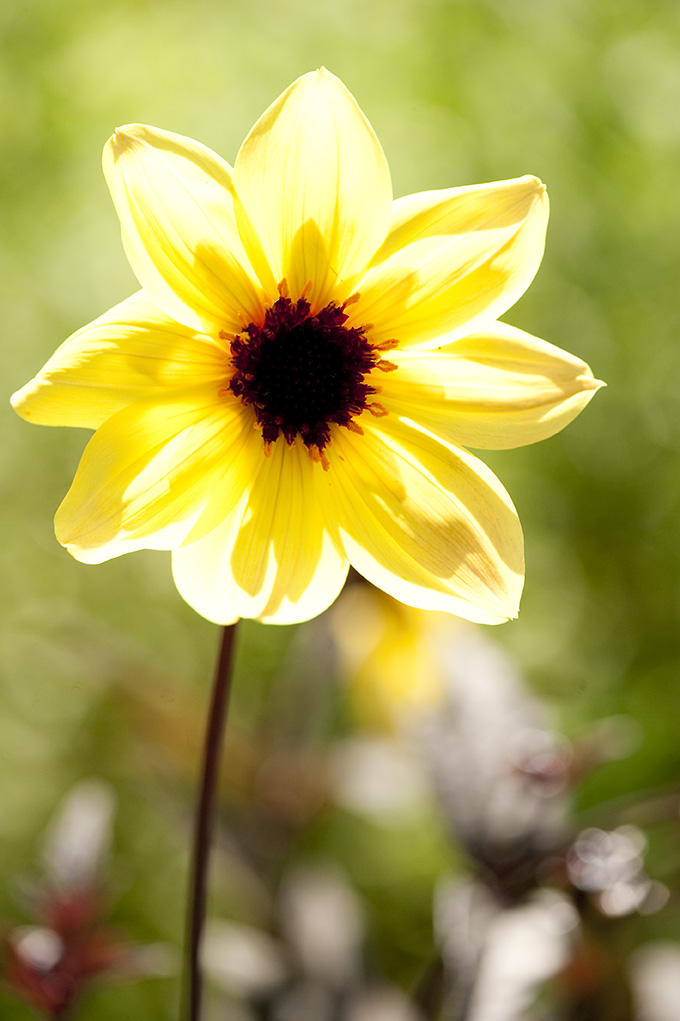
Dahlia ‘Mystic Illusion’ on the Seasonal Walk (photo by Ivo M. Vermeulen)
Posted in Around the Garden on June 8 2011, by Ann Rafalko
Have you been looking for a good reason to visit the Garden this June? Well, if you need some motivation to visit New York City’s greatest garden, consider us your motivators: This weekend is going to be spectacular! We have flowers, food, dancing, music, poetry, and so much more in store!
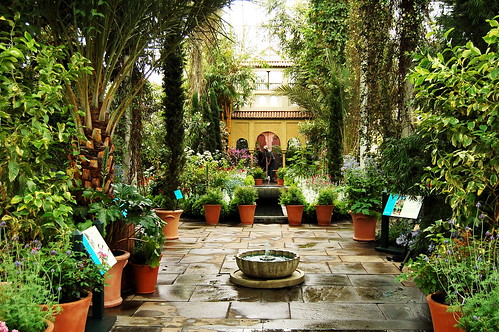 Start in the historic Enid A. Haupt Conservatory, where the best-smelling exhibition in New York City–complete with flowing fountains and elegant arches–is housed in the Victorian elegance of this landmark building. Be sure to visit the beautiful reflecting pool and its resident koi in the Conservatory Courtyard. A Garden Tour Guide-led guided tour of the exhibition is available Saturday and Sunday at 2:30 p.m. Meet at the entrance to the Conservatory.
Start in the historic Enid A. Haupt Conservatory, where the best-smelling exhibition in New York City–complete with flowing fountains and elegant arches–is housed in the Victorian elegance of this landmark building. Be sure to visit the beautiful reflecting pool and its resident koi in the Conservatory Courtyard. A Garden Tour Guide-led guided tour of the exhibition is available Saturday and Sunday at 2:30 p.m. Meet at the entrance to the Conservatory.
Saturday, June 11, 2011
My Lorca Poetry Series – 4 p.m. in the Perennial Garden
Hear American poets read their favorite Federico García Lorca poems and discuss the poet’s influence on their own work as part of Spanish Paradise: Gardens of the Alhambra. Poets: Christopher Maurer, Jaime Manrique, and Mark Statman. Co-presented with the Poetry Society of America.
Flamenco Among the Flowers – 1, 2, and 3 p.m. in the Arthur and Janet Ross Lecture Hall
The Garden comes alive with the sounds, rhythms, and movements of flamenco. Flamenco: Inside/Out introduces this traditional Spanish art form using live music and performers from various ethnic, cultural, and artistic backgrounds.
Sunday, June 12, 2011
The Food and Culture of the Alhambra – 4 p.m. in the Perennial Garden
Join chef and culinary historian Maricel Presilla for a fascinating, and delicious, exploration of the cuisine and culture of the al-Andalús region of Spain, home to the Alhambra. Presilla, who holds a doctorate in medieval Spanish history from New York University, has received formal training in cultural anthropology, and is a Beard Award-nominated chef, will be talking about several aspects of Islamic agriculture and cooking in al-Andalús. She will focus on vegetables, grains, nuts, olive oil, fermented condiments, aromatic spices (and spice mixes) and flowers, particularly scented roses. Her cooking demonstration may include: a spice mix or sauce; an eggplant dish called alboronía or another thirteenth-century dish with eggplant served with aromatic lamb meatballs (albóndigas), and a rose-scented dessert that shows the connection between al-Andalús and the New World. She will also be talking about the Islamic roots of the popular sweet and sour Spanish dish known as escabeche.
Tour of Library Exhibition Historical Views: Tourists at the Alhambra – Meet at 1 p.m. in the Orchid Rotunda at the entrance level to the Library Building
Join a Garden Tour Guide for a tour of Historical Views: Tourists at the Alhambra.
Flamenco Among the Flowers – 1, 2, and 3 p.m. in the Arthur and Janet Ross Lecture Hall
The Garden comes alive with the sounds, rhythms, and movements of flamenco. Flamenco: Inside/Out introduces this traditional Spanish art form using live music and performers from various ethnic, cultural, and artistic backgrounds.
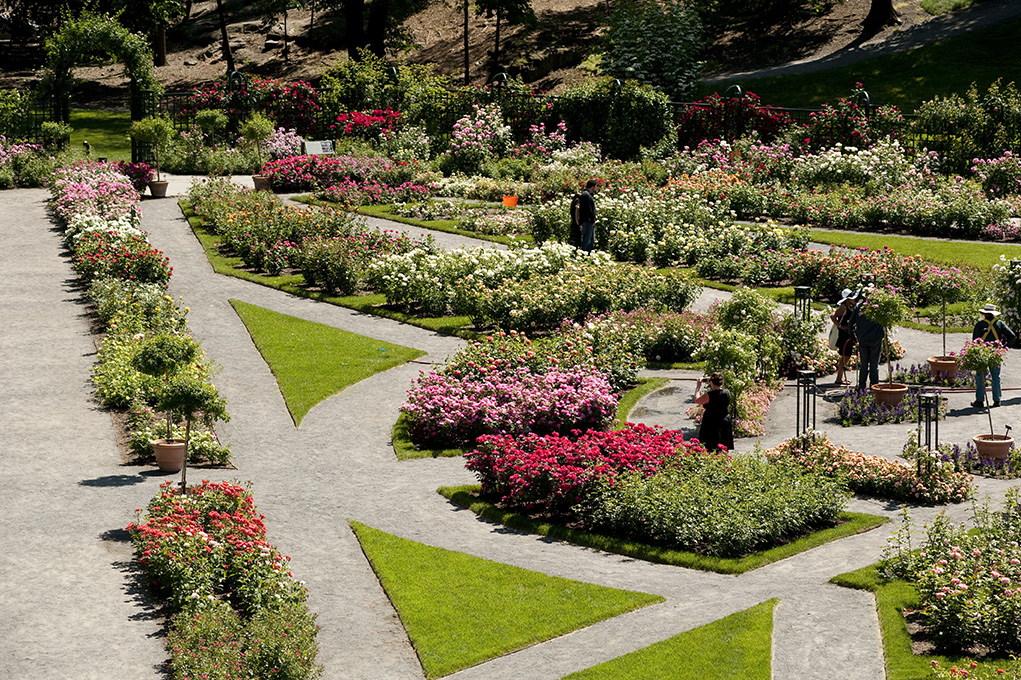 The award-winning Peggy Rockefeller Rose Garden one of the world’s most sustainable and beautiful showcases for America’s flower, and it is in full bloom right now! Set aside ample time so that you have as many minutes as you need to stop and smell the roses. In the Peggy Rockefeller Rose Garden, the roses smell as good as they look.
The award-winning Peggy Rockefeller Rose Garden one of the world’s most sustainable and beautiful showcases for America’s flower, and it is in full bloom right now! Set aside ample time so that you have as many minutes as you need to stop and smell the roses. In the Peggy Rockefeller Rose Garden, the roses smell as good as they look.
Sunday, June 12, 2011
Book Signing with Peter Kukielski – 11 a.m.-1 p.m. at Shop in the Garden
Meet the man behind the sustainable rose revolution. Curator of the Peggy Rockefeller Rose Garden, Peter Kukielski, will be signing copies of The Sustainable Rose Garden at Shop in the Garden, a volume of essays he co-edited with Pat Shanley and Gene Waering.
Saturday, June 11 and Sunday, June 12, 2011
Rose Garden Tour – 12:30 p.m. in the Peggy Rockefeller Rose Garden
Immerse yourself in the fragrance, color, and beauty of the award-winning Peggy Rockefeller Rose Garden on a tour with a Garden Tour Guide offered each day in June; and with an ASL interpreter on June 18. Learn the differences between heritage and modern roses, and between floribundas and hybrid teas, as well as facts about rose history, cultivation, and folklore.
Q&A Sessions with Rose Experts – 1-4 p.m. at the Peggy Rockefeller Rose Garden pergola
Our rose experts will answer your questions on caring for roses, cultivars to try in your garden, the history of the Peggy Rockefeller Rose Garden, and more.
Home Gardening Demonstration: Life is Rosy – 1:30 p.m. in the Peggy Rockefeller Rose Garden
Tour the sumptuous, award-winning Peggy Rockefeller Rose Garden. Learn standard rose-care practices, from fertilizing to pruning.
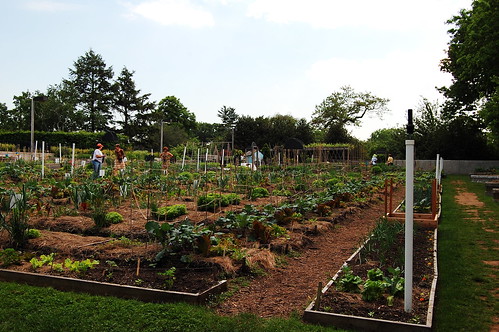 The Garden is a great place to get outside and enjoy nature: families can explore the natural world in the Everett Children’s Adventure Garden and at the Ruth Rea Howell Family Garden; gardeners can gather inspiration for their own gardens throughout the Garden’s 250-acres, and learn about plant varietals in the Home Gardening Center; and naturalists can spot a variety of migratory and year-round birds throughout the grounds.
The Garden is a great place to get outside and enjoy nature: families can explore the natural world in the Everett Children’s Adventure Garden and at the Ruth Rea Howell Family Garden; gardeners can gather inspiration for their own gardens throughout the Garden’s 250-acres, and learn about plant varietals in the Home Gardening Center; and naturalists can spot a variety of migratory and year-round birds throughout the grounds.
Saturday, June 11, 2011
Bird Walk – meet at 11 a.m. at the Reflecting Pool in front of the Leon Levy Visitor Center
Bring your binoculars and walk the Garden grounds with our bird expert, Debbie Becker. On your walk you will look for the species that live here year-round as well as those just migrating through: owls, hawks, songbirds, and more. Learn about the bird-friendly plants and habitats that provide food, shelter, and nesting sites. Learn more about birding at the Garden in this short video.
Saturday, June 11 and Sunday June 12, 2011
Global Gardens Spring Harvest Celebration – 1:30-5:30 p.m. in the Ruth Rea Howell Family Garden
Travel globally while eating locally! Celebrate the end of spring with our Global Gardeners. Travel to China, Korea, Ireland, Italy, and the Caribbean by visiting each Global Garden plot and earn stamps in your Garden Passport as you learn and explore.
Posted in Photography on May 21 2011, by Ann Rafalko
The peonies that line Perennial Garden Way are getting set to explode into a riot of color and aroma. There are a few out, and hundreds more just waiting for the perfect weather to burst forth into a profusion of petals. Here’s a few of the early peonies to get you set for peony prime time!

‘Do Tell’
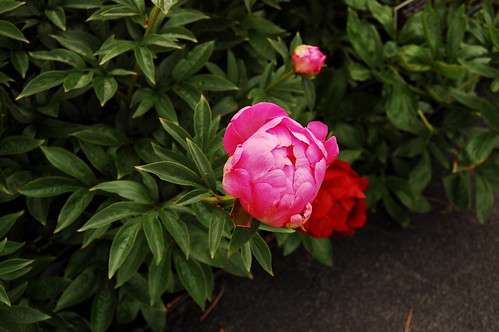
‘Kevin’ – Isn’t it great that there’s a peony named Kevin?
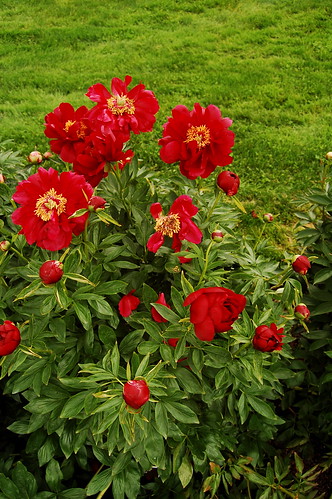
‘John Harvard’ – This peony which bears the colors of the Ivy League school founded by the man it is named for was one of the first to open this year, and is still going strong.

‘Carina’
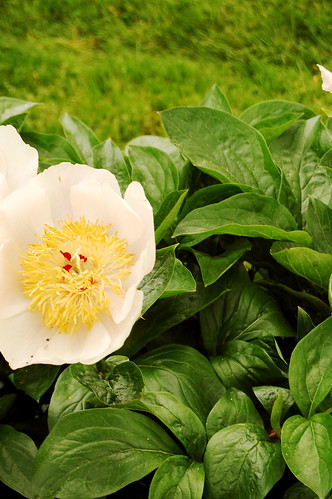
‘Golden Wings’
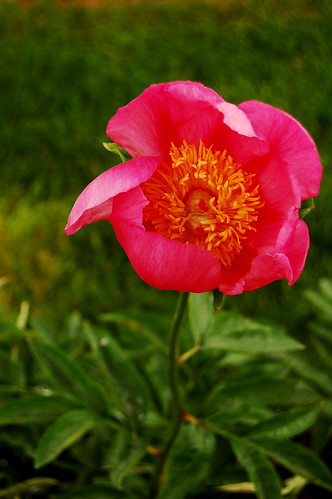
‘Firelight’

‘Cythera’
Photos by Ann Rafalko.
Posted in Photography on May 20 2011, by Ann Rafalko
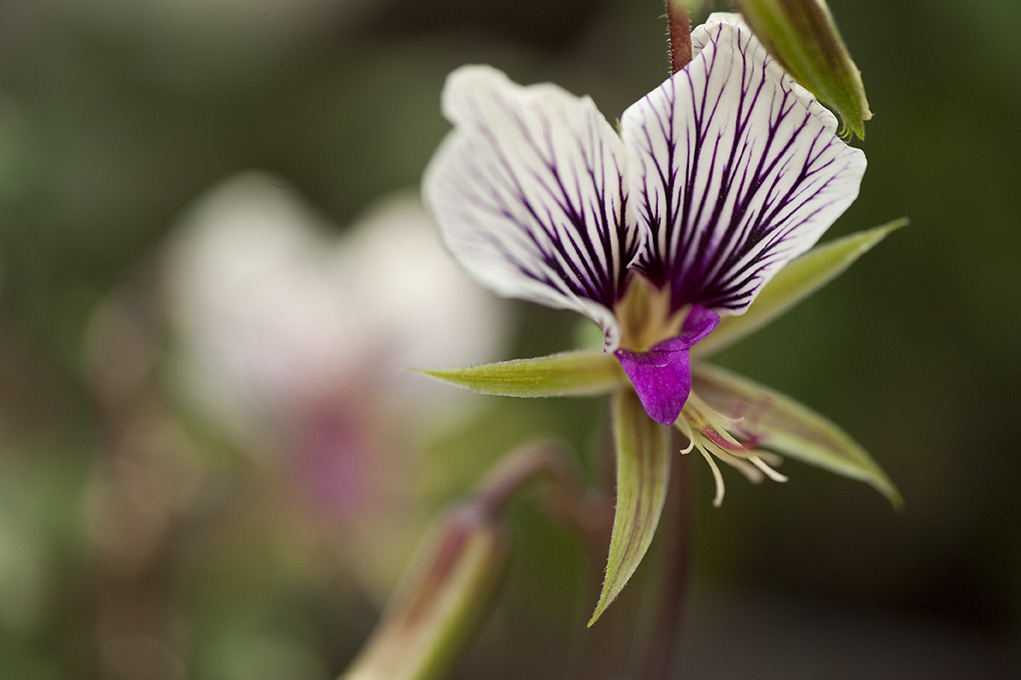
Pelargonium praemorsum (photo by Ivo M. Vermeulen)
Posted in Photography on May 19 2011, by Ann Rafalko
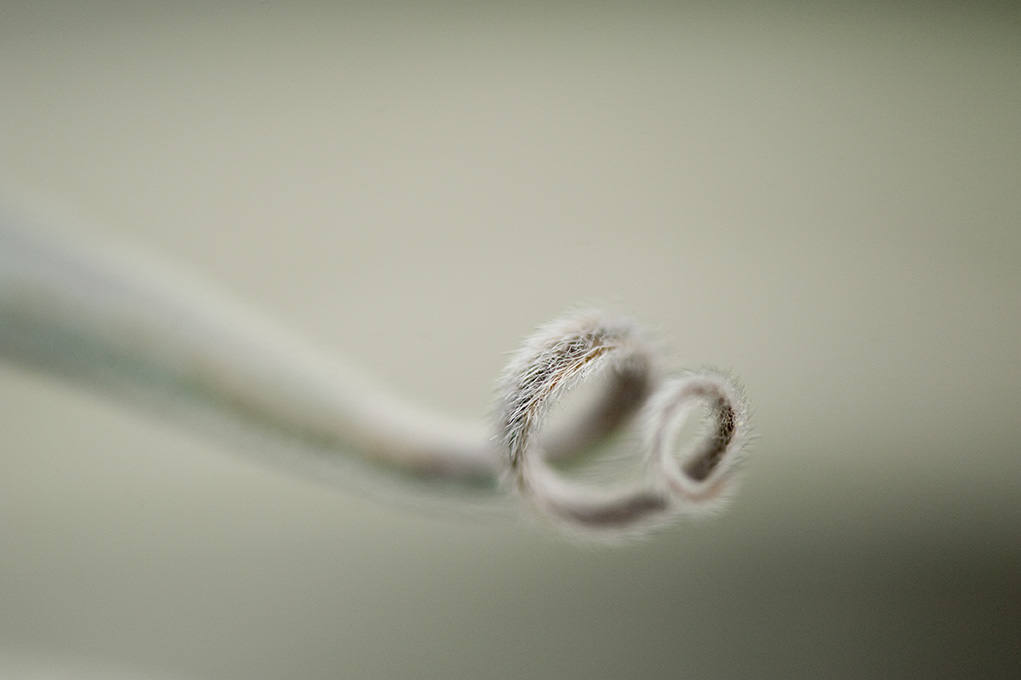
Echium wildpretii ssp. wildpretii (photo by Ivo M. Vermeulen)
Posted in Photography on May 13 2011, by Ann Rafalko
One of the most common questions we get at the Garden is, “What should I see?” Apparently the answer, “Everything!” is a little too broad for some people. So we try to let you know through this blog, through our What’s Beautiful Now feature, through Flickr, Twitter, and Tumblr what we’re seeing that is astoundingly beautiful right now. And right now, we have two words for you: Tree peonies.
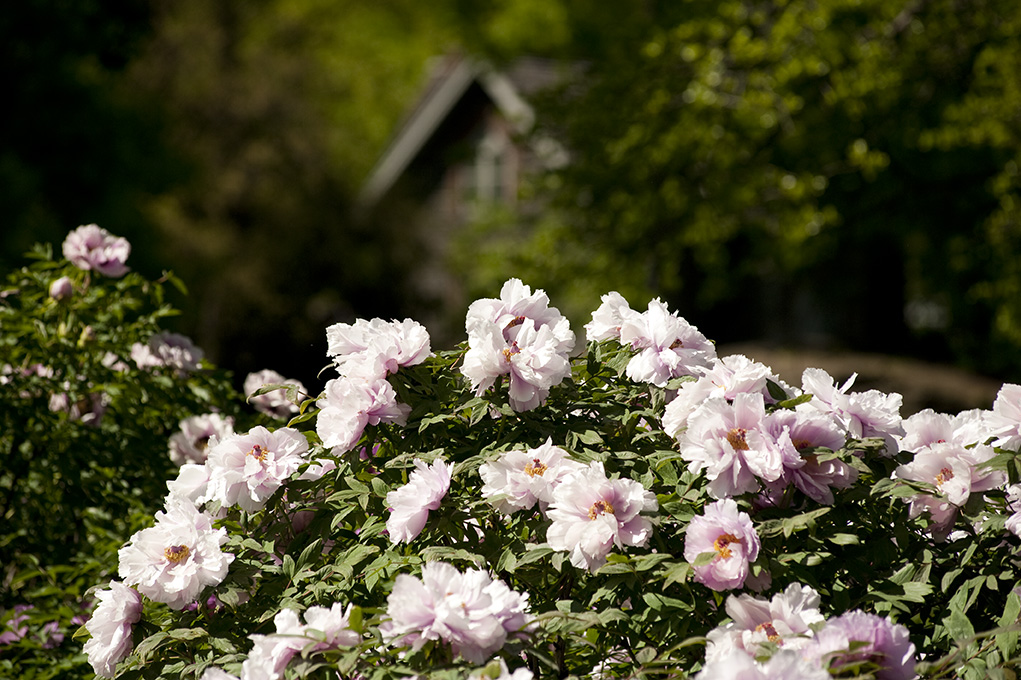
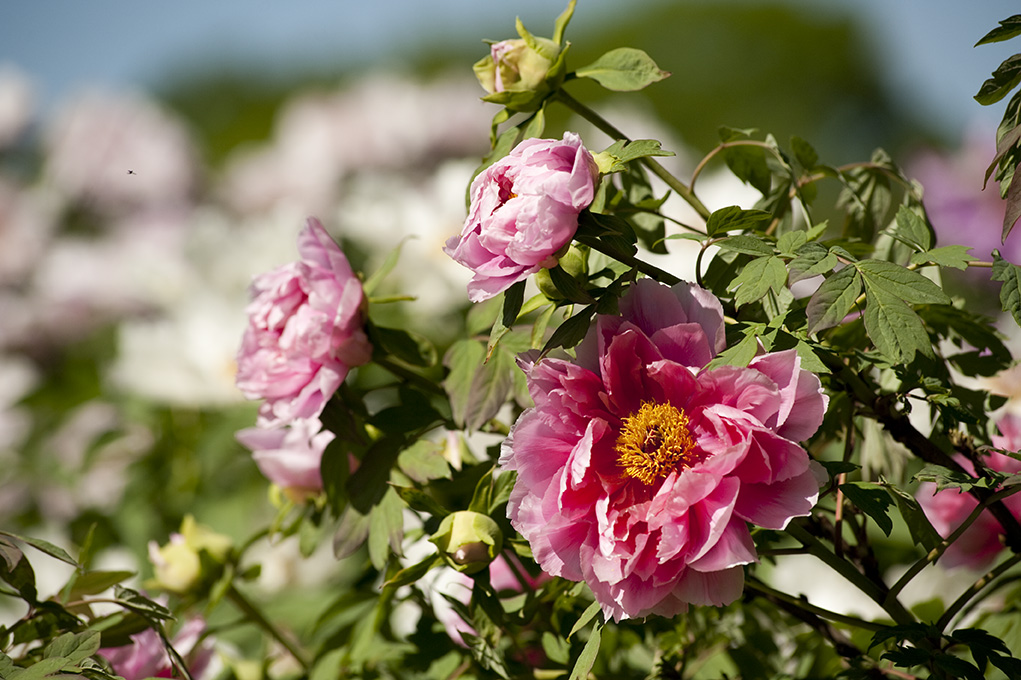
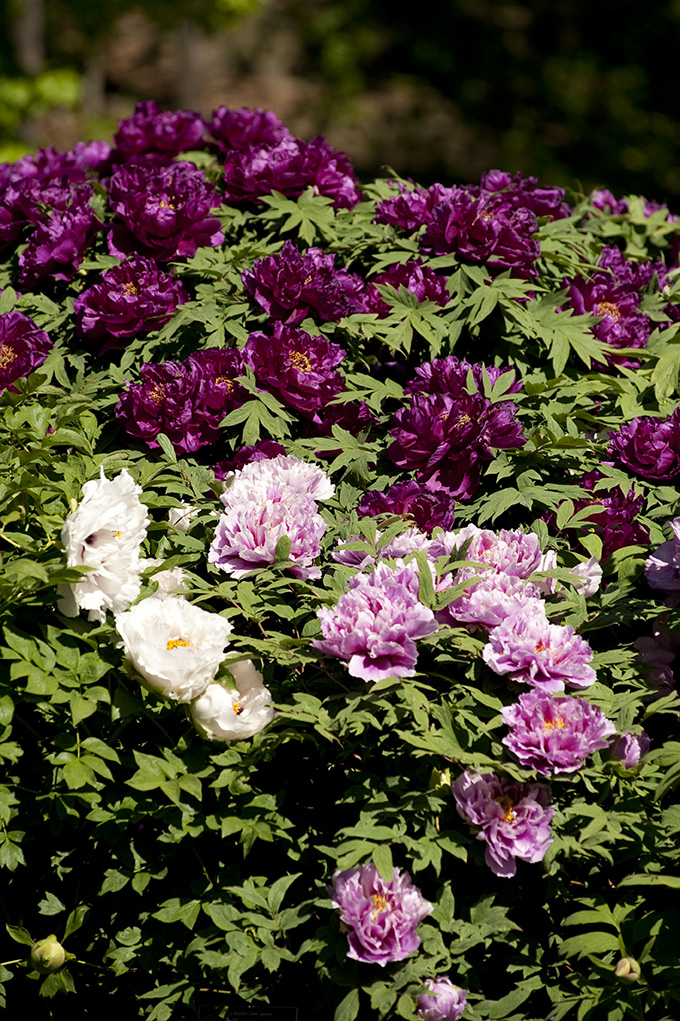
Photos by Ivo M. Vermeulen
Posted in Photography on May 11 2011, by Ann Rafalko
If early spring had an official color, I would nominate that it be yellow. And mid-spring? Pink. Definitely pink.
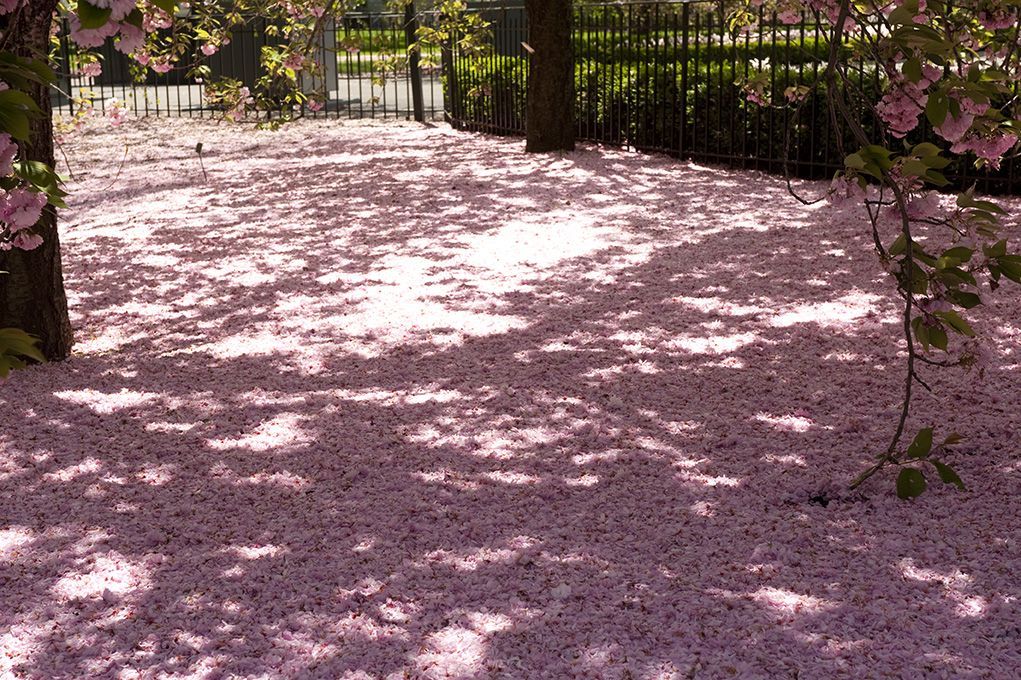
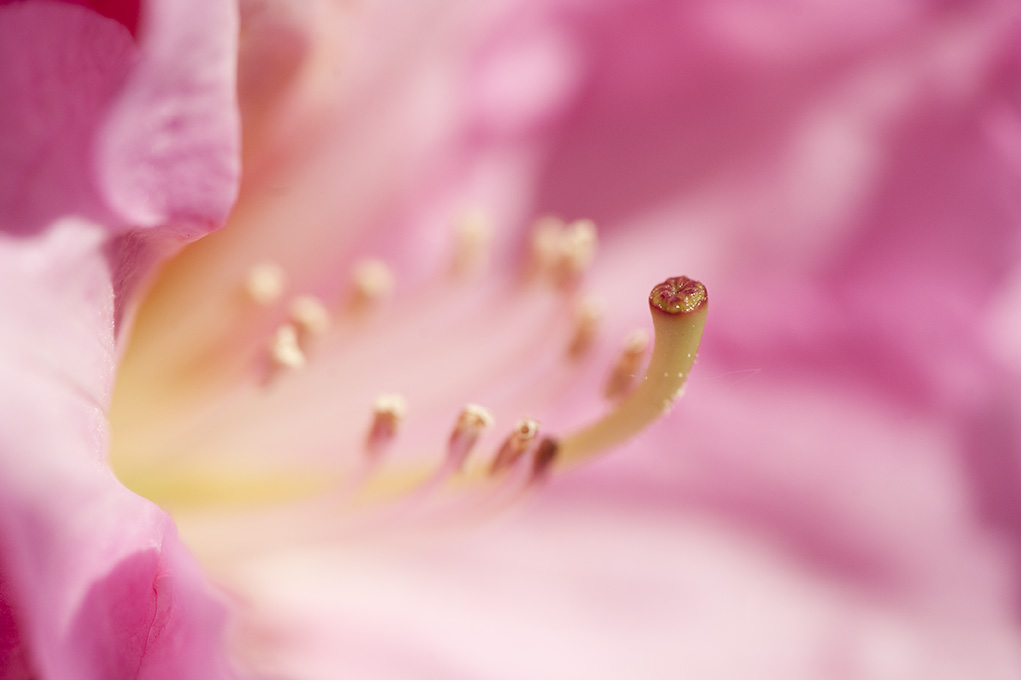
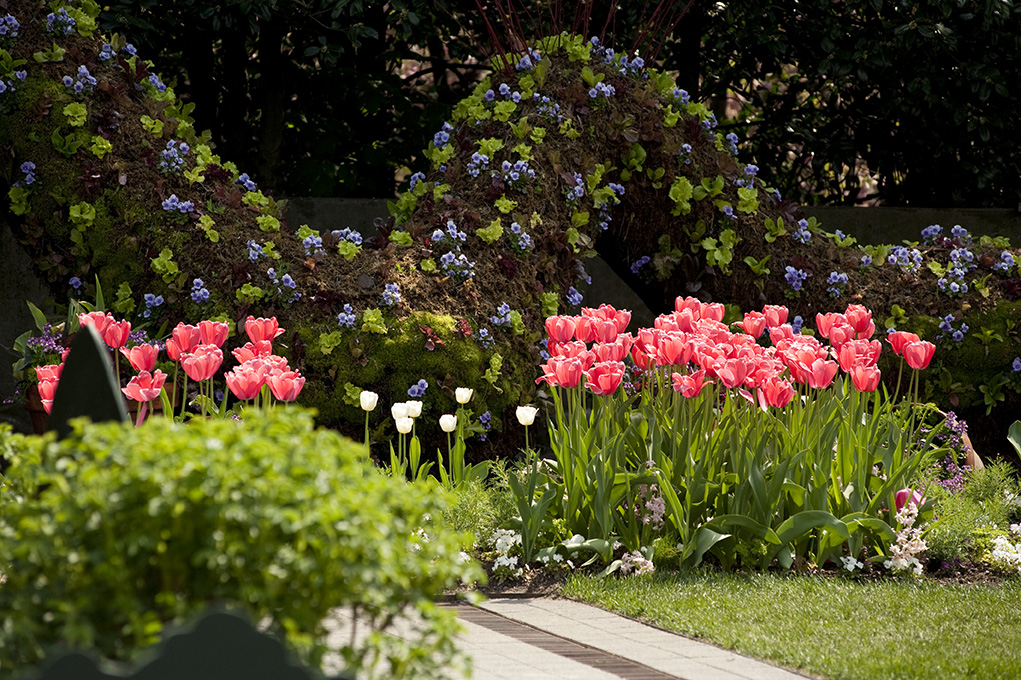
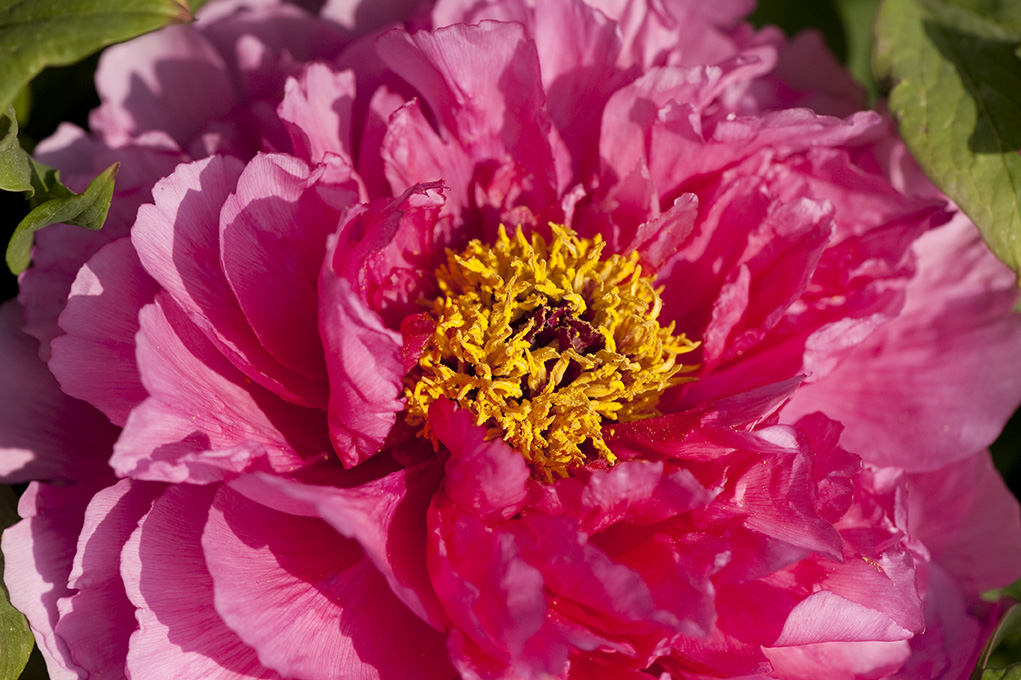
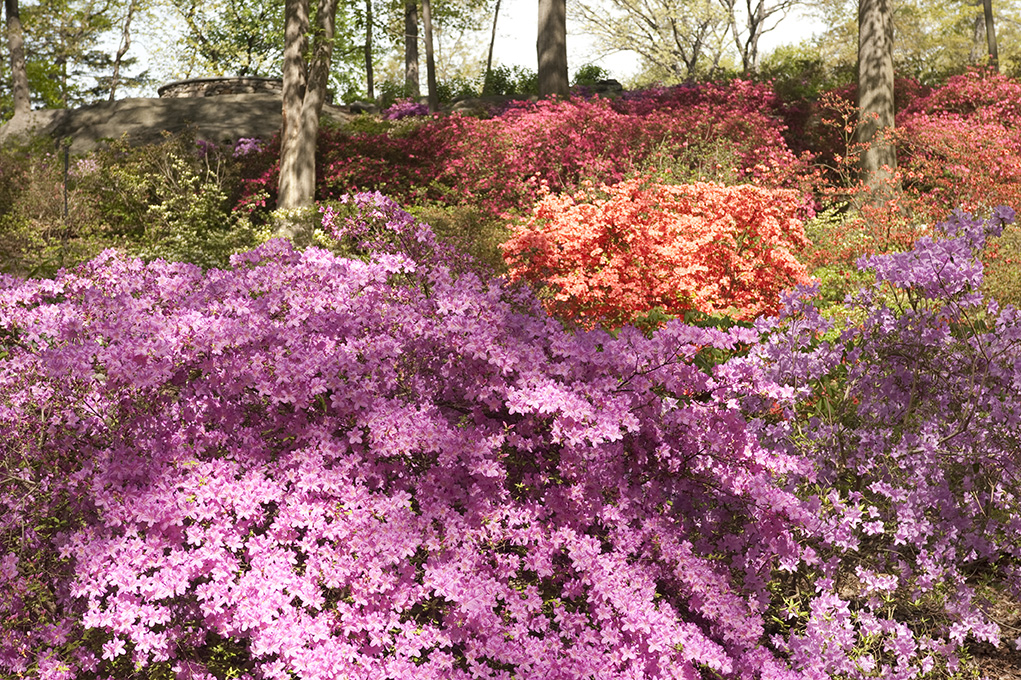
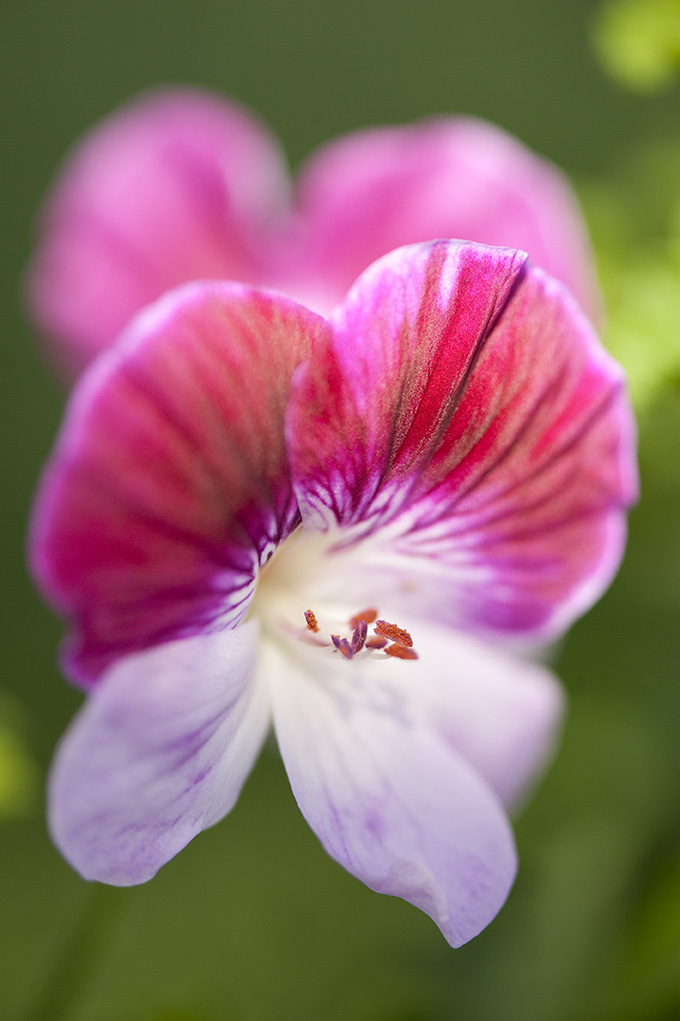
Posted in Around the Garden, Photography on April 26 2011, by Ann Rafalko
| Ann Rafalko is Director of Online Content. |
It is beautiful here today. Just in case you can’t make it out of your office to hop a train and come up to the Bronx, I thought I’d take a walk and snap some pictures for you. It’s more than just beautiful out, too. According to one birder I met today, it’s also prime warbler migrating time. As he put it, the next two weeks will be “warbler heaven.” So whether you’re a birder, photographer, gardener, or walker, now is the time to come and visit the Garden!
So much more below including cherry blossoms, incredible tulips, and the amazing Rock Garden.
Posted in Photography on April 20 2011, by Ann Rafalko
We’re having a strange spring in New York City; full of cool, misty days, punctuated by short bursts of sunshine and warmth. It may not be good for humans the long , snowy winter we just got through, but it’s fabulous for the flowers. So damn the weather! Come visit, it’s pretty incredible.
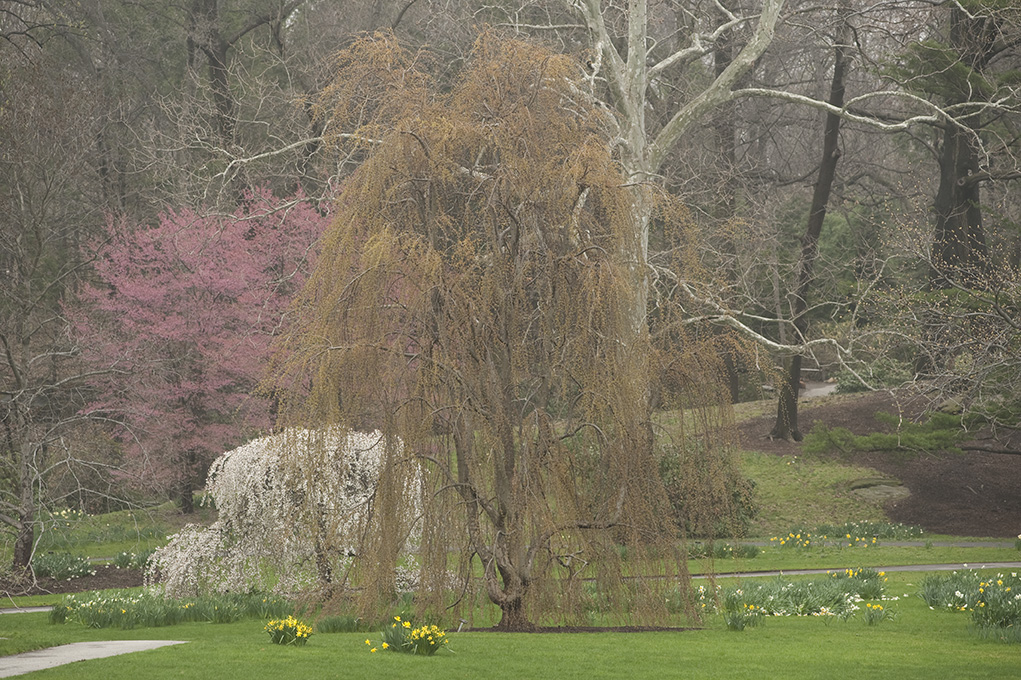
Photo by Ivo M. Vermeulen






 Start in the historic Enid A. Haupt Conservatory, where the best-smelling exhibition in New York City–complete with flowing fountains and elegant arches–is housed in the Victorian elegance of this landmark building. Be sure to visit the beautiful reflecting pool and its resident koi in the Conservatory Courtyard. A Garden Tour Guide-led guided tour of the exhibition is available Saturday and Sunday at 2:30 p.m. Meet at the entrance to the Conservatory.
Start in the historic Enid A. Haupt Conservatory, where the best-smelling exhibition in New York City–complete with flowing fountains and elegant arches–is housed in the Victorian elegance of this landmark building. Be sure to visit the beautiful reflecting pool and its resident koi in the Conservatory Courtyard. A Garden Tour Guide-led guided tour of the exhibition is available Saturday and Sunday at 2:30 p.m. Meet at the entrance to the Conservatory.
 The Garden is a great place to get outside and enjoy nature: families can explore the natural world in the Everett Children’s Adventure Garden and at the Ruth Rea Howell Family Garden; gardeners can gather inspiration for their own gardens throughout the Garden’s 250-acres, and learn about plant varietals in the Home Gardening Center; and naturalists can spot a variety of migratory and year-round birds throughout the grounds.
The Garden is a great place to get outside and enjoy nature: families can explore the natural world in the Everett Children’s Adventure Garden and at the Ruth Rea Howell Family Garden; gardeners can gather inspiration for their own gardens throughout the Garden’s 250-acres, and learn about plant varietals in the Home Gardening Center; and naturalists can spot a variety of migratory and year-round birds throughout the grounds.

















